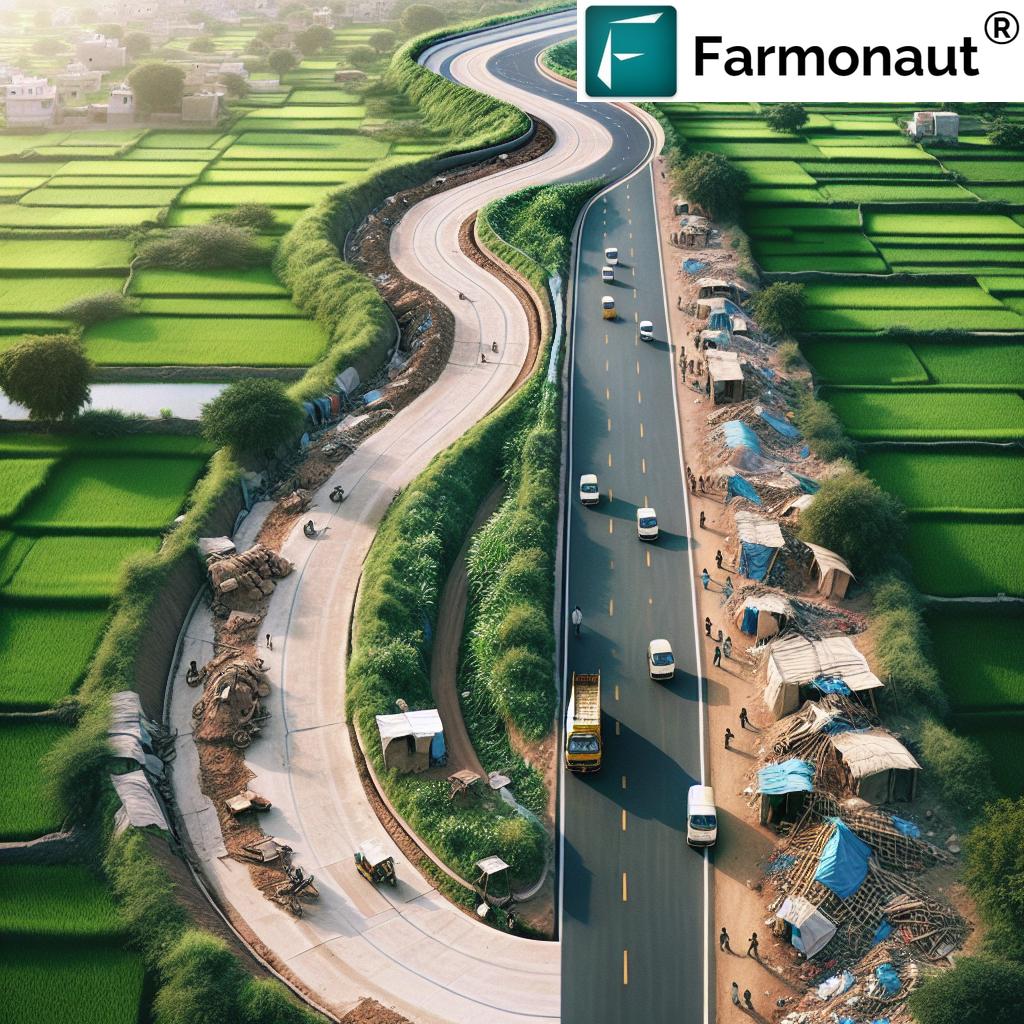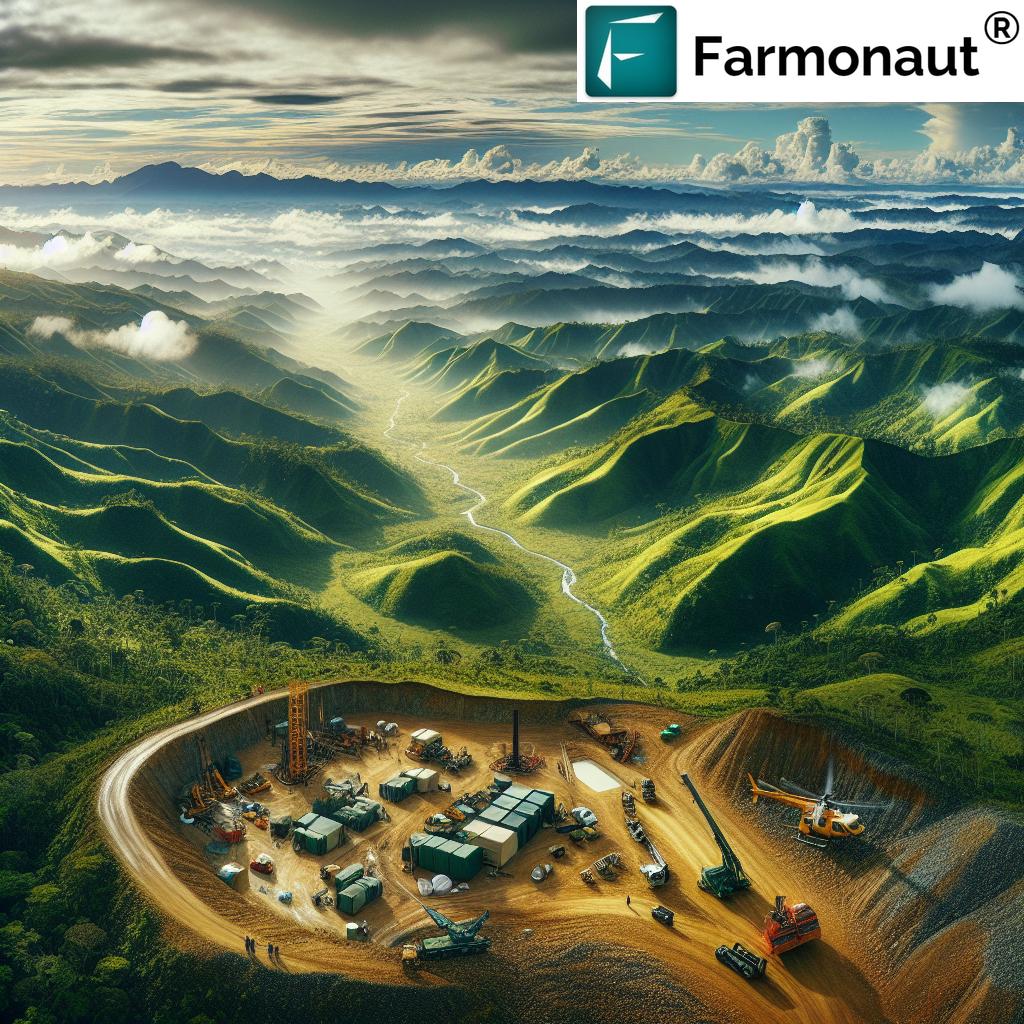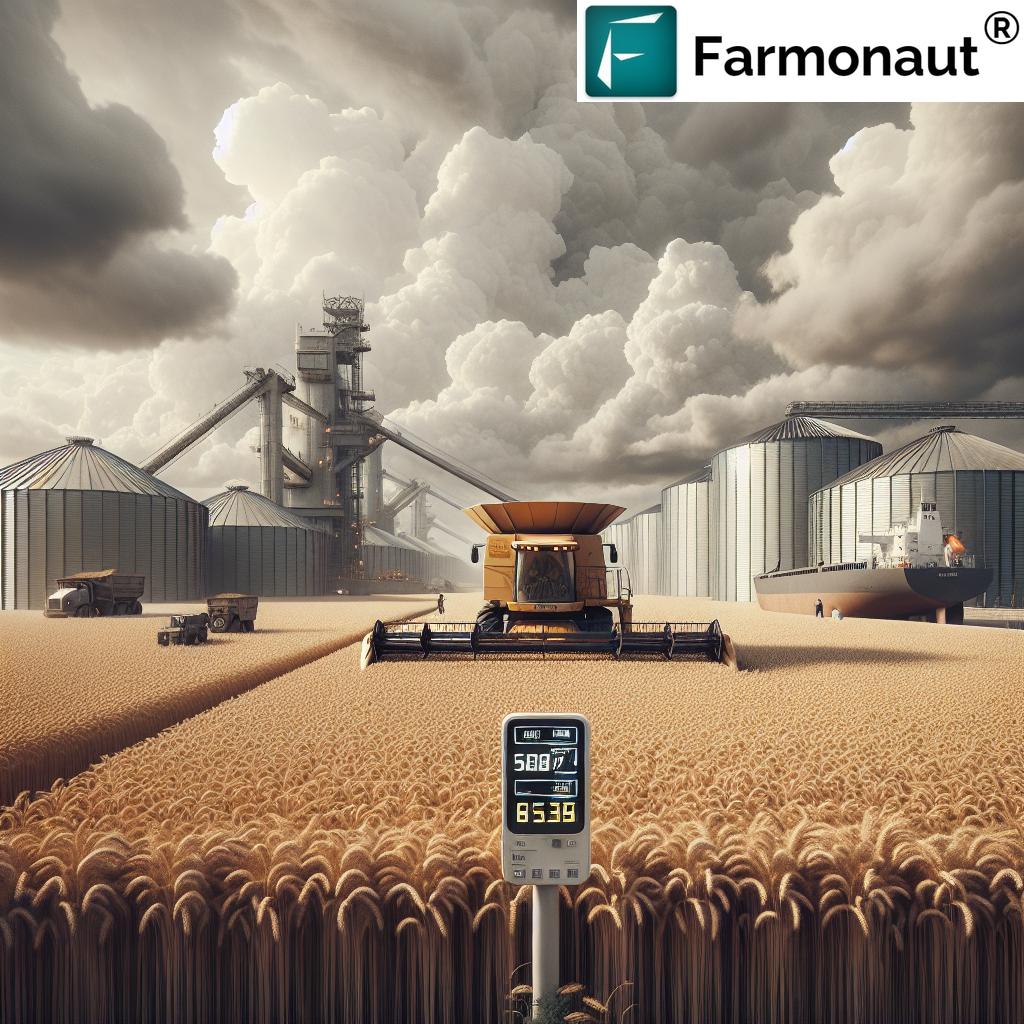Ag Land for Sale Near Me: 2025 PH Investment Trends
“In 2024, sustainable agriculture investments in the Philippines grew by 18%, driven by local climate-smart land demand.”
Meta Description: Explore Ag Land for Sale Near Me: 2025 PH Investment Trends. Learn about agricultural land for sale in the Philippines, sustainable farming, legal tips, and the latest market trends for informed land investment.
Agricultural Land Sales: An Overview
Agricultural land sales form the backbone of rural economies and food production systems around the globe. As we step into 2025, the global search for “ag land for sale near me” and interest in agricultural land for sale in the Philippines continue to rise, reflecting ongoing shifts in population, rural development, urban expansion, and sustainability imperatives.
At its core, agricultural land sales encompass the transfer or purchase of farmable parcels intended primarily for activities such as crop production, livestock grazing, and agroforestry. This sector plays a vital role in not only producing food, but also supporting rural livelihoods and environmental health.
- Sector Scope: Includes both smallholder farmable lands as well as commercial agricultural estates.
- Main Activities: Crop cultivation, livestock grazing, agroforestry, and mixed-use development.
- Drivers: Urban expansion, climate-smart farming need, food security, investment diversification, and infrastructure improvement.
2025 Ag Land Market Trends: Insights & Drivers
Let’s explore the key trends shaping the agricultural land market as we move into 2025—and what this means for prospective buyers searching for options like “ag land for sale near me” or “agricultural land for sale in Philippines”.
1. Rising Demand and Farmland Scarcity
- Urban expansion and industrialization are steadily reducing available farmland—especially near cities.
- This leads to premium value for parcels in proximity to urban centers, infrastructure, and labor resources.
- Buyers looking for “ag land for sale near me” often find higher land prices closely linked to ease of market access and productive potential.
2. Growing Focus on Sustainability, Soil Health, and Climate-Resilient Farming
- Demand is increasingly driven by buyers and investors who prioritize sustainability, organic practices, and integrated pest management.
- In places like the Philippines, climate risks (e.g., typhoons, droughts) and water access issues strongly influence land value and shape best practices.
- Soil testing, conservation farming, and climate-smart technologies are top priorities for maximizing yields and long-term land resilience.
“Over 60% of ag land buyers in the Philippines now prioritize environmental regulations and sustainable practices when purchasing.”
3. Government Policies, Land Reform, and Local Support Programs
- Government policies and local initiatives profoundly influence agricultural land sales through land use regulations, subsidies, agrarian reform, and sustainable farming incentives.
- In the Philippines, there are ongoing programs to redistribute farmland to smallholders, support agribusiness investments, and improve food security through regenerative practices.
- Buyers must stay informed on dynamic regulations and permissible agricultural activities in their target zones.
4. Infrastructure, Market Access, and Connectivity
- Infrastructure—such as roads, irrigation systems, and storage—has a significant impact on land value, food production costs, and post-harvest losses.
- Buyers are increasingly seeking lands with strong infrastructure links and proximity to local markets.
5. Investment Diversification, Traceability, and Supply Chain Transparency
- Investors are exploring new options not only for productive use but for risk diversification, supply chain traceability, and ensuring long-term security of food and natural resources.
- There is rising demand for lands that can offer blockchain-based traceability (see Farmonaut Traceability Solutions).
Agricultural Land for Sale in the Philippines: Region-by-Region Analysis
The Philippines presents some of the most dynamic opportunities for agricultural land investment in Southeast Asia. For those searching “agricultural land for sale in Philippines”, regional factors, legal considerations, and best practices are all critical to making informed decisions and promoting productive land use.
Key Regional Zones for Agriculture in the Philippines
Let’s examine the top zones, each with their own market trends, advantages, and unique challenges for prospective buyers, farmers, and investors:
- Central Luzon (Rice Granary of the Philippines): Vast irrigated farmland, efficient infrastructure, and proximity to key urban markets.
- Bukidnon & Mindanao: Fertile volcanic soil, cooler climate, suitable for high-value crops (pineapple, bananas, corn, coffee), and dynamic agribusiness investments.
- Visayas Region: Best for sugarcane, coconut, and mixed farming; influenced by typhoon/seasonal weather patterns—climate resilience is paramount here.
- Mindoro & Batangas: Fruit and vegetable production belts, increasingly attractive to younger farmers and agritech investors.
Emerging Local Trends in 2025
- Climate-smart land management, regenerative agriculture, water conservation, and carbon footprinting are top focus areas. Explore Farmonaut Carbon Footprinting Solutions.
- Soil health, integrated farming, and adoption of digital ag technologies are prioritized to improve productivity in the face of climate variability.
- Young farmers and agribusinesses are entering the sector, bringing greater demand for data-driven, sustainable, and tech-enabled Ag Land.
Ag Land Investment Trends Comparison Table (Philippines, 2025)
This table provides a quick reference for evaluating agricultural land sales across key regions in the Philippines, focusing on sustainability, legal, and market trend factors for 2025:
| Region/Province | Estimated Price per Hectare (₱) | Sustainability Score (1–5) |
Climate Resilience Index | Legal Considerations | Market Demand Trend |
|---|---|---|---|---|---|
| Central Luzon | ₱1,800,000 – 3,000,000 | 4.5 | High | Clear Title, Some Agrarian Reform Areas | Rising |
| Bukidnon / Mindanao | ₱1,200,000 – 2,200,000 | 4.2 | Very High | Clear Title / Some Customary Land | Rising |
| Western Visayas | ₱950,000 – 1,800,000 | 3.7 | Moderate | Agrarian Reform, Mixed Titles | Stable |
| Southern Tagalog (Batangas, Mindoro) | ₱1,600,000 – 2,800,000 | 4.0 | Good (Typhoon Prone) | Clear Title | Rising |
| Bicol Region | ₱850,000 – 1,400,000 | 3.3 | Variable (Typhoon Prone) | Agrarian Reform, Mixed Titles | Stable |
| Cagayan Valley & Isabela | ₱950,000 – 1,800,000 | 4.1 | Good | Clear Title, Some Disputed | Rising |
| Davao Region | ₱1,400,000 – 2,400,000 | 4.6 | Very High | Clear/Customary Title | Rising |
Table Insights:
- Regions like Central Luzon, Davao, and Bukidnon show rising demand, high sustainability and climate resilience scores. These areas are top picks for investors exploring agricultural land for sale in the Philippines.
- Legal status and title clarity are crucial—ensure a clear title for risk-free acquisition. Areas with agrarian reform status may require extra due diligence.
- Regions with higher prices often offer superior infrastructure, market access, and more climate-smart investment opportunities.
Legal & Regulatory Framework: Making Informed Land Acquisitions
Understanding regulations and having informed legal guidance are essential to mitigate risks and enhance investment value when exploring ag land for sale near me, especially in the Philippines.
Key Legal Considerations for Agricultural Land Sales in the Philippines
-
Ownership Restrictions:
- Foreigners cannot own land directly but can lease for up to 50 years (renewable), or hold minority stakes in Filipino-owned corporations.
-
Land Classifications:
- Agricultural, residential, industrial, forest/timberland, and mineral land—ensure zoning matches intended use for agricultural production.
-
Title Verification:
- Always check authenticity and status of land titles to guard against fraud and encumbrances.
-
Government Programs & Agrarian Reform:
- Be aware of land within agrarian reform programs—extra diligence required and may affect ownership transfer processes.
-
Environmental & Local Ordinances:
- Comply with local environmental regulations, protected area status, irrigation rights, and integrated water management rules.
Best Practices for Agricultural Land Acquisition in 2025
Given the dynamic market trends, climate realities, and regulatory landscape, adopting modern best practices is crucial for all buyers and investors searching for or exploring agricultural land for sale in the Philippines or other global ag land for sale near me options.
1. Thorough Due Diligence & Land Verification
- Check title, ownership history, and encumbrances
- Carry out environmental impact assessments, check for protected zones, flood hazards, or typhoon risks
- Observe soil health reports, irrigation access, and infrastructure connectivity
2. Assess Land Productivity and Farming Potential
- Investigate soil quality, historical crop yields, and market proximity for your intended agricultural activity
- Engage local experts, conduct soil sampling and analyze market demand for your chosen crop or agribusiness venture
3. Consider Infrastructure & Local Access
- Land with nearby roads, irrigation canals, post-harvest storage, and local markets reduces operating costs and enhances productive potential
4. Plan for Sustainable & Climate-Resilient Use
- Adopt regenerative agriculture, agroforestry, crop rotation, conservation tillage, and climate-smart irrigation systems
- Safeguard soil health, local biodiversity, and water resources to maintain investment value over time
5. Engage Legal, Local, and Technical Experts
- Work with licensed legal advisers, agricultural extension workers, land surveyors, and Farmonaut’s digital advisory systems for risk-free investment
How Farmonaut Supports Sustainable Land Investments
As a satellite technology leader, we at Farmonaut deliver affordable, real-time remote monitoring and resource management solutions that empower agriculture, rural development, and informed land acquisitions globally.
- Satellite-Based Monitoring: We help buyers and land managers assess soil health, crop productivity, water use, and climate impacts across various land parcels. Our NDVI and multispectral imagery provide actionable data for smart decision making.
- Jeevn AI Advisory: Our AI-powered system offers customized weather forecasting, yield potential, and crop management insights based on real-time satellite data. See Jeevn AI in action here.
-
Blockchain-Based Traceability: We support supply chain transparency, anti-fraud measures, and food security with blockchain technology across the agricultural sector.
(Read about Farmonaut’s Traceability Tools) -
Environmental Impact Tracking & Carbon Footprinting: We make it easy to measure and improve the environmental performance of your land investments.
(Discover Farmonaut Carbon Monitoring) -
Fleet and Resource Management: Optimize machinery, vehicle fleets and reduce costs on large agriculture or agri-business estates.
(More info about Fleet Management) -
API Access: Developers and agritech companies can integrate Farmonaut’s data with their platforms for enhanced technological solutions.
(Farmonaut API)
(API Documentation) -
Large-Scale Farm Management: We enable efficient oversight for cooperative and group-managed lands through digitized maps, real-time field operations, and remote diagnostics.
(Farmonaut Agro-Admin App) -
Credit & Insurance Verification: We support banks and insurers with satellite-based land verification—making agricultural lending more transparent and secure.
(Read about Farmonaut’s Crop Loan & Insurance Verification)
Start Using Farmonaut Tools
Web, Android, and iOS Apps:
Get instant soil, crop, and climate insights for your prospective land acquisitions. Try the apps here:
Farmonaut Subscription and Pricing
Access all Farmonaut services at affordable, scalable subscription rates for individuals, businesses, and institutions:
Climate-Smart Farming: Technology & Sustainable Practices
Climate change poses new challenges, but also opportunities for sustainable investment and climate resilience in ag land.
Best Climate-Smart Practices for Farmland in 2025
- Adopt Precision Agriculture: Leverage digital tools—like satellite-based crop mapping, soil moisture sensors, and drone surveys—for higher yields and more efficient use of water and inputs.
- Implement Crop Rotation and Diversification: Diversification of crops and agroforestry improves soil health, pest management, and biodiversity.
- Conservation and Organic Farming: Use reduced tillage, organic fertilizers, and biological pest controls to reduce input costs and improve soil quality.
- Water-Efficient Irrigation:** Invest in drip, sprinkler, and rainwater-harvesting systems to maximize water-use efficiency, especially in climate-vulnerable areas.
- Regenerative Practices: Incorporate cover cropping, mulching, contour plowing, and pasture rotation for long-term land productivity.
- Digital Traceability: Use solutions such as those from Farmonaut to market premium, climate-resilient produce through credible data and blockchain traceability (see Traceability Tools).
Technologies to Watch in 2025
- AI-based Crop Advisory: Platforms like Farmonaut’s Jeevn AI provide real-time advice, weather forecasts, and localized recommendations to ensure efficient, sustainable crop production.
- Blockchain for Secure Land Records: Ensures transparency and quick verification for agricultural land acquisition deals (more info).
- Satellite-Based Carbon Footprinting: Calculate and report your farm’s carbon impacts, making your produce more attractive in green markets (details here).
- Remote Resource Management: Digital fleet and machinery tracking—for savings on labor, fuel, and maintenance across large landholdings (discover here).
Summary & Conclusion
As the demand for agricultural land continues to grow globally in 2025, driven by population growth, food security concerns, and the need for sustainable farming practices, the landscape for agriculture investments is evolving rapidly.
- If you are searching for “ag land for sale near me” or exploring “agricultural land for sale in the Philippines,” pay close attention to market dynamics, regional sustainability, climate resilience, infrastructure, and legal regulations.
- Making informed and responsible land acquisition decisions is crucial for maximizing productive use, supporting local livelihoods, and promoting environmental stewardship.
- Embracing digital agriculture—especially satellite-based, AI, and blockchain-driven solutions—offers tangible ways to safeguard your investment, boost transparency, and unlock new market opportunities.
At Farmonaut, we commit to empowering our users, businesses, and governments worldwide through affordable and accessible satellite technology—driving sustainability, security, and growth for the future of agriculture.
FAQs: Ag Land for Sale Near Me (Philippines, 2025)
-
What factors most affect the value of agricultural land for sale in the Philippines in 2025?
Value depends on location/proximity to cities, infrastructure (roads/irrigation), soil health, legal clarity, climate resilience (flood/typhoon risk), and current market demand. -
How do I check if a parcel is suitable for my intended farming or agribusiness venture?
Conduct soil/land assessments, check historical yields, legal status, and use Farmonaut’s satellite data for comprehensive crop potential and resource analysis. -
Are there restrictions for foreign ownership of agricultural land in the Philippines?
Yes. Foreigners cannot directly own land, but may enter long-term leases or own no more than 40% share in a Philippine corporation that holds land. -
What are the best climate-smart or sustainable practices to implement on newly acquired farmland?
Start with soil health/irrigation planning, adopt integrated pest and weed management, rotate crops, develop agroforestry, and use technology platforms for ongoing resource monitoring. -
How can Farmonaut help in selecting and managing agricultural land?
We offer satellite imagery, AI-driven crop/soil health analytics, traceability, carbon footprinting, and resource management tools—helping buyers and investors make data-driven decisions. -
Where can I access the Farmonaut app and APIs?
Use our Web App, Android App, or iOS App. Developer and business APIs are available at this link and developer docs. -
What are the long-term trends for ag land investors in the Philippines post-2025?
Expect rising demand in climate-resilient, sustainable zones. Tech-driven farms, traceable supply chains, and compliance with environmental regulations will command premium value going forward.
Ready to future-proof your agricultural investments for 2025 and beyond? Use the latest data, sustainability trends, and technology to maximize returns, enhance food security, and power sustainable development in the Philippines and beyond.













